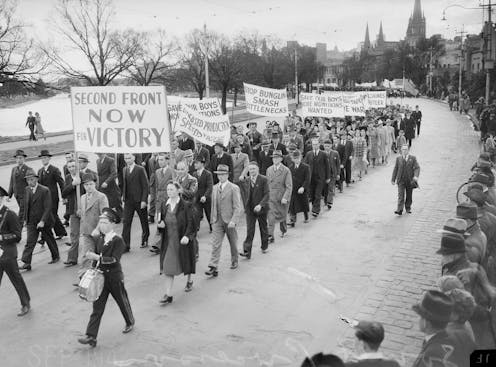Stuart Macintyre's rich history of the Communist Party of Australia recaptures a lost political world
- Written by Sean Scalmer, Associate Professor, School of Historical and Philosophical Studies, The University of Melbourne

The crimson thread of communism runs through the work of the great, lamented Australian historian, Stuart Macintyre.
He joined the Communist Party of Australia in the early 1970s as a New Leftist student of formidably theoretical tastes, and he transferred that membership to the Cambridge University branch of the British party when undertaking his doctoral studies.
His prize-winning doctoral thesis became his first book, A Proletarian Science (1980), an examination of the history of Marxism within the British working-class movement from 1917-1933. Macintyre’s second book, Little Moscows (1980), compared three of Great Britain’s mining and industrial towns, which had become genuine strongholds of communism. His first major project on return to Australia was a perceptive biography of a West Australian communist and union leader, Militant: The Life and Times of Paddy Troy (1984).
Review: The Party: The Communist Party of Australia from heyday to reckoning - Stuart Macintyre (Allen & Unwin)
Macintyre’s immense natural talents, prodigious commitment to his work, and restless curiosity led him to explore many other fields. He made important contributions to the historical study of liberalism, historiography, the universities, the social sciences, the Australian Labor Party, social justice, and much else besides.

















